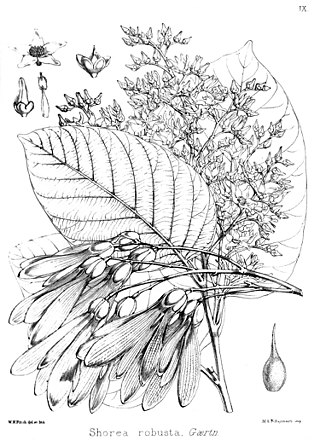
Shorea robusta, the sal tree, sāla, shala, sakhua, or sarai, is a species of tree in the family Dipterocarpaceae. The tree is native to India, Bangladesh, Nepal, Tibet and across the Himalayan regions.
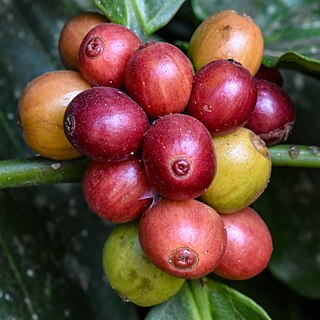
Coffea canephora is a species of coffee plant that has its origins in central and western sub-Saharan Africa. It is a species of flowering plant in the family Rubiaceae. Though widely known as Coffea robusta, the plant is scientifically identified as Coffea canephora, which has two main varieties, robusta and nganda.

Grevillea robusta, commonly known as the southern silky oak, silk oak or silky oak, silver oak or Australian silver oak, is a flowering plant in the family Proteaceae, and accordingly unrelated to true oaks, family Fagaceae. Grevillea robusta is a tree, and is the largest species in its genus. It is a native of eastern coastal Australia, growing in riverine, subtropical and dry rainforest environments.
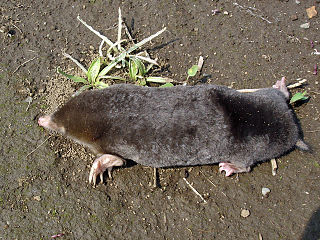
Mogera is a genus of mole in the tribe Talpini. They are native to East Asia.
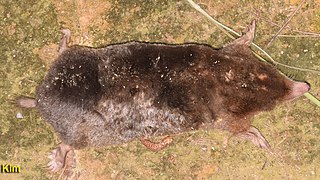
The Ussuri mole or large mole, is a species of mammal in the family Talpidae, formerly treated as a subspecies of the Japanese mole. It is found in China, North Korea, South Korea, and Russia and lives in a long burrow, seldom emerging on the surface of the ground during the day.

Pentagenia, similar to Hexagenia, is a genus of insect in the family Ephemeridae, commonly referred to as burrowing mayflies.

Coffea liberica, commonly known as the Liberian coffee, is a species of flowering plant in the family Rubiaceae from which coffee is produced. It is native to western and central Africa, and has become naturalised in areas including Colombia, Venezuela, the Philippines, Borneo and Java.
Eucrada is a genus of death-watch and spider beetles in the family Ptinidae. There are at least two described species in Eucrada.

Laos produces two main types of coffee: Robusta and Arabica. Robusta is mainly used for regular coffee as well as a typical coffee drink in Laos where it is sweetened with condensed milk. The latter, Arabica, is of a higher quality due to its mild taste, and it is used for espresso. For the 20,000 tons of coffee that Laos produces a year, 5,000 tons are Arabica beans and 15,000 tons are Robusta.
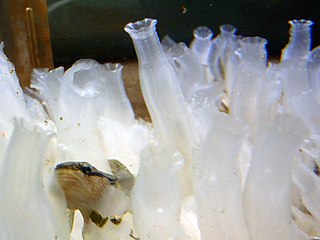
Ciona robusta is a species of marine invertebrate in the genus Ciona of the family Cionidae. The holotype was collected on the northeastern coast of Honshu Island, Japan. Populations of Ciona intestinalis known as Ciona intestinalis type A found in the Mediterranean Sea, the Pacific Ocean, east coast of North America, and the Atlantic coasts of South Africa have been shown to be Ciona robusta.

Macrohomotoma is a genus of plant-parasitic hemipterans in the family Homotomidae. There are about 15 described species in Macrohomotoma.

Xylosandrus crassiusculus, known generally as the Asian ambrosia beetle or granulate ambrosia beetle, is a species of tropical bark beetle in the family Curculionidae. It is native to Asia and has spread to Africa, Europe, Australasia and the Americas. The adult beetle is reddish-brown and some 2 to 3 mm long.
Neocrepidodera robusta is a species of flea beetle in the family Chrysomelidae. It is found in North America.
Datana robusta, the annual buttonweed or robust datana moth, is a species of moth in the family Notodontidae. It was first described by Herman Strecker in 1878 and it is found in North America.
Proctacanthella willistoni is a species of robber flies in the family Asilidae.
Proctacanthella is a genus of robber flies in the family Asilidae. There are about eight described species in Proctacanthella.
Proctacanthella cacopiloga is a species of robber flies in the family Asilidae.

Aptenopedes is a genus of spur-throated grasshoppers in the family Acrididae. There are about 13 described species in Aptenopedes.
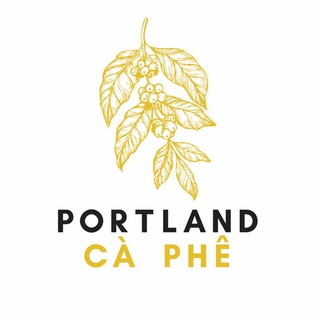
Portland Cà Phê is a coffee shop with two locations in Portland, Oregon. The business specializes in Vietnamese coffee drinks, including robusta coffee and Vietnamese iced coffee, and also serves bánh mì and pastries.













